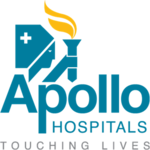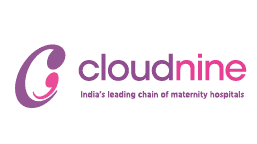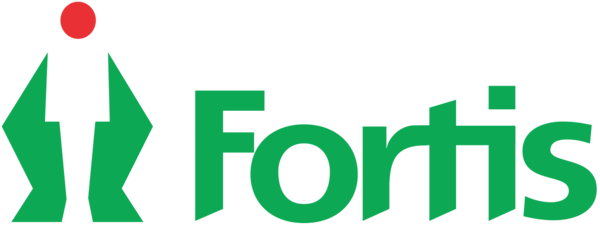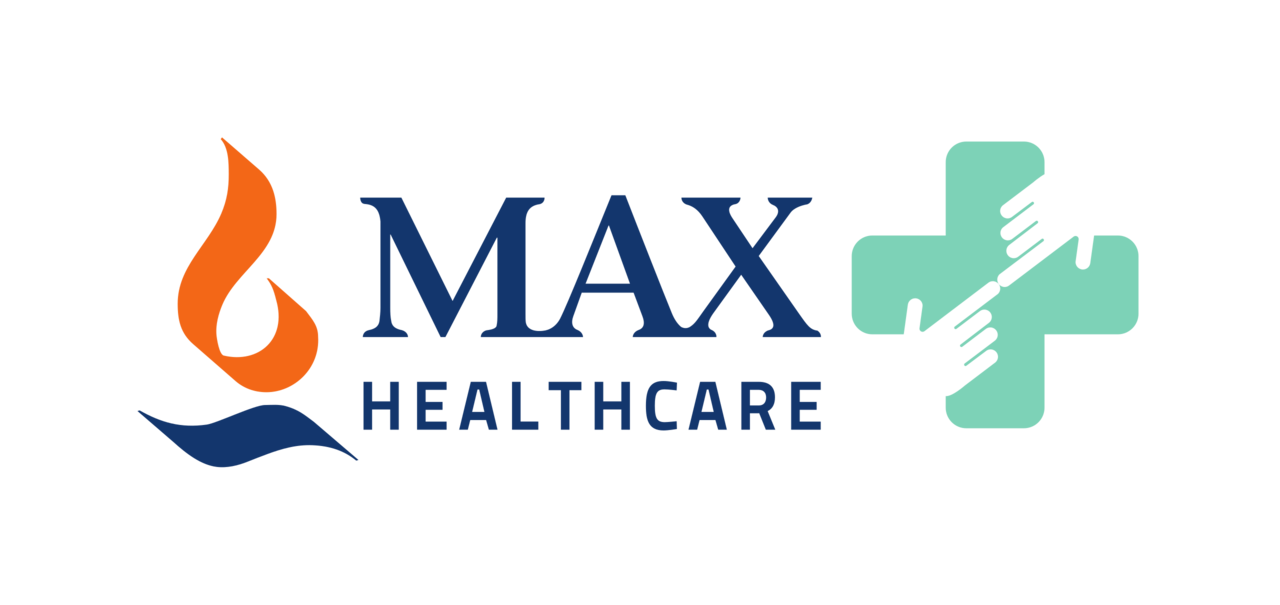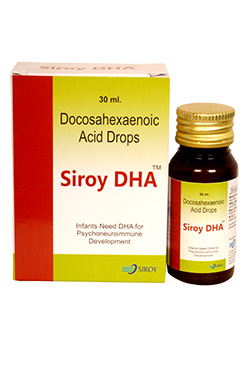
Siroy DHA
Siroy DHA 100mg/mlSIROY DHA
(PURE DHA DROPS 100mg per ml & Soft gel Capsule form200mg)
Pure DHA preparation is widely available in western country. However supplementing of Pure DHA as per guideline is difficult in India, as Pure DHA in form of drops was not available till date. SIROY LIFE SCIENCES have made this supplementation possible by making in pure form of DHA drops; 100mg per ml named as SIROY DHA in 30ml pet bottle .
Available in form of drops 100mg per ml and Soft gel capsule 200mg and also available DHA 100mg with Vitamin D 400IU per ml.
What is DHA?
Essential fatty acids (EFA) are being discussed for their important role in brain development and functioning as well as their cardio vesicular protective role. There is also a growing evidence of their role in protection from infection and allergy disorders Anti inflammatory - Role in atopy, asthma. It is important to understand the differences amongst the various EFA and also to understand role of one versus the other. Here we will be discussing some basic facts about essential fatty acids and their role in infant nutrition & psychoneuroimmune development, Part of phospholipid membrane of Brain cells; Signal transduction, neurotransmission and neurogenesis) Anti inflammatory - Role in atopy, asthma, allergy disorders.
How does it work?
Fats provide the main source of energy for infants and young children. It is not only important to provide flavor and texture to the food but is needed by all cell membranes including neuronal connections. It is also important for absorption of fat soluble vitamins and provides us with the EFA. EFA are so called because they can’t be manufactured in the body and are essential for body’s growth. Mammalian cells are unable to insert double bonds more proximal to methyl terminal of fatty acid than the 7th carbon. The most abundant essential fatty acids are:
- Linolenic acid (LA) 18 carbon: 2 n-6 (means it has 18 carbons ; two double bonds ; last double bond at 6th carbon from the methyl terminal of the fatty acid)
- α Linolenic acid (ALA) 18 carbon: 3 n-3
By the process of desaturation and chain elongation, LA is converted to Arachidonic acid 20 carbon: 4 n-6 (AA) and ALA is converted to Eicosapetanenoic acid 20 carbon: 5 n-3 (EPA) and Docosahexaenoeic acid 22 carbon: 6 n-3(DHA). This conversion is affected by many factors like age, alcohol intake, smoking and certain drugs. At extreme of ages and in pregnancy, this conversion is not sufficient enough to meet the increased needs for brain, retina development or to meet the fetal requirements. To summarize, Omega 3 fatty acids are ALA, EPA and DHA and Omega 6 fatty acids are LA and AA.
Brief History on DHA:
It has been seen documented as early as 1950 that infants given skimmed milk and hydrogenated coconut oil failed to gain wt and develop typical skin lesions c.f. those given small amounts of corn oil as well. Similarly in 1960 it was shown that the use of parenteral nutrition with proteins and glucose alone led to poor growth and altered visual functions compared to PN+n-6 fatty acids emphasizing the importance of EFA.
All EFA are not same:-
There are important differences between Omega 6 and Omega 3 fatty acids and some of the differences are very important from clinical point of view.
- Omega 6 LCPUFA (Eicosanoids) are more potent, are proinflammatory and adipogenic
- Omegas 3 LCPUFA (Eicosanoids) on the other hand are anti inflammatory and decreases fat deposition. Fish oil (EPA & DHA) has been used in Rheumatoid arthritis emphasizing its anti inflammatory properties. There are various differences between EPA and DHA as well. DHA has been shown to prevent CVS disease by reducing blood vessel inflammation and atherosclerosis1.There are less heart diseases in Eskimos and Japanese fisherman which has been attributed to higher blood DHA/EPA levels c.f. Omega 6 LCPUFA in them. Triglyceride levels fall more with 26% in DHA (26%) compared to EPA (21%). So evidence is in favor of DHA compared to EPA for the beneficial effects seen with Omega 3 fatty acids. More over EPA concentration in mother’s milk in negligible making its importance very doubtful in infant nutrition.
When to recommend:-
Recommendation for first 6 months of life: Understanding that “Mother’s Milk Is the Best for the Baby” one need to look at the lipid composition in mother’s milk first to draw some logical conclusions.
- 50% of energy as lipids
- 12% LA, 0.6% AA (12.6% Omega 6 FA), 0.5% ALA, 0.3% DHA (0.8%Omega 3 FA)
- Actual amount of LCPUFA depend on maternal diet.
Baby should be given exclusive mother’s milk for first six months of life and mother’s diet should have sufficient amounts of EFA and especially DHA. But Indian diet is very inadequate for Omega 3 FA content.
Ratio of Omega 6: Omega 3 FA in various diets across the world:
| Indian Diet | 5-10:1 |
| USA | 30-70:1 |
| Japan | 12:1 |
| Ideal Diet | 2:1 |
The main reason for poor Omega 3 FA in Indian diet is lack of animal products especially fish and excess intake of animal milk and milk products. There are a number of vegetable sources of EFA and one must have knowledge so that the same can be advised to the mother.
Sources of Omega 3/6 fatty acids
| Omega 3 fatty acids | Omega 6 fatty acids |
| Flaxseed or linseed | Sunflower |
| Rapeseed or canola | Safflower |
| Peanut | Sesame |
| Olive | Palmolive |
| Perilla | Corn |
| Walnut | Primrose |
| Soya | Borage |
| Green leafy vegetables, dry fruits | Invisible fats |
| Fish / Fish oil |
Supplementation of DHA during Pregnancy:-
It has shown to improve cord Omega 3 levels and neonatal short follow up 3- 6 months has not shown any benefits (Malcom et al. Helland et al but long term follow up till 4 yrs has shown beneficial effects on mental ability2 Some studies also show less atopy and lower type I IDDM in supplemented infants. We must remember that these studies are done in west in mothers with better DHA content in their diet and if we reciprocate the results for Indian mother with poor DHA content in their diet, the beneficial effects are bound to be more.
Pregnancy & LCPUFA DHA accretion occurs in III rd trimester mainly and the transfer depends on the age of the mother (at elderly age transfer would be less), primi or second gravida (primi expected to have better transfer), interval between the pregnancies (less the interval, less is the transfer in the second baby), Maternal diet (Fish, Marine products) and alcohol intake (reduces DHA transfer).
Supplementation during Lactation:-
It has also shown to improve breast milk DHA content but clinical effects shown in different studies are not consistent. In Indian Context, DHA supplementation should help the neurodevelopment of the infants and children.
Infant Nutrition and EFA:-
All infants should be fed on exclusive mother’s milk for first six months and in case mother’s milk is not sufficient, alternative milk with sufficient amounts of EFA should be provided. As unmodified bovine milk (cow or buffalo or goat) does not contain any EFA, the only option is a balanced infant formula with ratio of LA/ALA between5:1 to 15:1.
DHA supplementation in term formula:-
Cochrane (2001) reviews after analyzing 10 trials have concluded that there are contradictory results on beneficial effects on developmental indices. Certain trials show better problem solving (finding a hidden toy)3 or higher scores on Bayley Mental Development Index until 17 weeks of age4 while others show no benefits5 / Transient benefit6 There is some effect seen in reduction of BP and Type I DM with no documented side effects.
LCPUFA and preterm formula:-
There is no ambiguity as far as preterm milk formula and their supplementation is concerned. Meta analysis by San Giovanni show better visual acuity at 2&4 months. There is strong recommendation by AAP that preterm formulae should contain both AA and DHA.
Infant nutrition 6months to one year:-
Recommendations for fat intake
First 6 months
40-60% of total energy
Omega 6: omega 3 ratio 5-10:1
<1% trans fats
After 2 yrs
Fat 30-35% calories
Omega 6: 4-10% energy
Omega 3: 1-2% energy
Transfats <2% energy
Infants must be continued breast milk or term baby follow-up formula along with addition of semisolid diet with emphasis on addition of vegetable oils with high Omega 3 FA (Soyabean oil, canola oil, mustard oil, fish oil, rapseed oil etc.)
Prime Key Messages:-
- Essential fatty acids are important for brain, retina and growth All essential fatty acids are not same
- Omega 3 LCPUFA have anti allergic properties, good for brain and heart
- Maternal diet should contain enough DHA, otherwise supplementation is a good idea
- Supplementation during lactation is less rewarding Breast feeds till 6 months is best strategy
If not
- Cow’s milk is absolutely no
- Term baby formulae is second best option
- Preterm formulae should be supplemented with DHA
For infants and bigger children: fat content should come down, DHA still important
Dermatology
Metabolism of polyunsaturated fatty acids by skin epidermal enzymes: generation of antiinflammatory and antiproliferative metabolite
In the skin epidermis, the metabolism of polyunsaturated fatty acids (PUFAs) is highly active. Dietary deficiency of linoleic acid (LA), the major 18-carbon n26 PUFA in normal epidermis, results in a characteristic scaly skin disorder and excessive epidermal water loss. Because of the inability of normal skin epidermis to desaturate LA to g-linolenic acid, it is transformed by epidermal 15-lipoxygenase to mainly 13-hydroxyoctadecadienoic acid, which functionally exerts antiproliferative properties in the tissue. In contrast, compared with LA, arachidonic acid (AA) is a relatively minor 20-carbon n26 PUFA in the skin and is metabolized via the cyclooxygenase pathway, predominantly to the prostaglandins E2,F 2a, and D2. AA is also metabolized via the 15lipoxygenase pathway, predominantly to 15-hydroxyeicosatetraenoic acid. At low concentrations, the prostaglandins function to modulate normal skin physiologic processes, whereas at high concentrations they induce inflammatory processes. PUFAs derived from other dietary oils are also transformed mainly into monohydroxy fatty acids. For instance, epidermal 15-lipoxygenase transforms dihomo-g-linolenic acid (20:3n26) to 15-hydroxyeicosatrienoic acid, eicosapentaenoic acid (20:5n23) to 15-hydroxyeicosapentaenoic acid, and docosahexaenoic acid (22:6n23) to 17-hydroxydocosahexaenoic acid, respectively. These monohydroxy acids exhibit antiinflammatory properties in vitro. Thus, supplementation of diets with appropriate purified vegetable oils, fish oil, or both may generate local cutaneous antiinflammatory and antiproliferative metabolites which could serve as less toxic in vivo monotherapies or as adjuncts to standard therapeutic regimens for the management of inflammatory skin disorders. Am J Clin
- KEY WORDS Arachidonic acid, dihomo-g-linolenic acid, DGLA, docosahexaenoic acid, DHA, essential fatty acid, eicosapentaenoic acid, EPA, g-linolenic acid, GLA, 13-hydroxyoctadecadienoic acid, 13-HODE, 13-HODE-substituted diacylglycerol, leukotriene B4, LTB 4, prostaglandin E2, PGE2, protein kinase C, polymorphonuclear cell, polyunsaturated fatty acid, PUFA
Recommendation:-
WHO Guidelines recommend at least 2.6 gm of Omega 3 LCPUFA and 100-300 mg DHA/Day during pregnancy and lactation.
***SIROY DHA 100mg per day for infant and 200mg to 300mg per day for adult and during pregnancy.***
References:
- Grimble RF. Dietary lipids and the inflammatory response. Proceedings of the Nutrition Society 1998; 57:535-542.
- Helland. Pediatrics 2003; 111(1): e 39-440.
- Williatts P. Lancet 1998; 352:688-91)
- Birch EE.Dev Med Child Neurol 2000; 42:174-81)
- Makrides M. Pediatrics 2000; 105:32-38.
- Carlson SE. J Pediatr 1992; 120:S159-67.
DHA (docosahexaenoic acid) is a fatty acid found in the meat of deep ocean cold-water fish, including mackerel, herring, tuna, halibut, salmon, cod liver, whale blubber, seal blubber or Ocean algae and now vegetable extract sources are widely available .
Difficult to understand and confuse DHA with EPA (eicosapentaenoic acid). They are both in fish oil and vegetable oil, but they are not the same. DHA can be converted into EPA in the body. See separate listings for fish oil and EPA.
DHA must be used as a supplement for infants, LBW/ELBW babies, premature babies and as an ingredient in baby formula during the first six months of life to promote better visual acuity, neurological, certain inflammations, immunity and mental development. This practice probably started because DHA is found naturally in breast milk. But as per studies very little not enough. DHA is also used in combination with arachidonic acid during the first four to six months of life for this purpose.
DHA is used for treating type 2 diabetes, coronary artery disease (CAD), dementia, and attention deficit-hyperactivity disorder(ADHD).
Some people use DHA is for improving vision (visual acuity), preventing an eye disease called age-related macular degeneration (AMD), preventing and treating depression, and reducing aggressive behavior in people in stressful situations.
DHA is used in combination with eicosapentaenoic acid (EPA) for a variety of conditions, including the prevention and reversal of heart disease, stabilizing heartrhythm, asthma, cancer, painful menstrual periods, hayfever, lung diseases, systemic lupus erythematosus (SLE), and certain kidney diseases. EPA and DHA are also used in combination for high cholesterol, high blood pressure, psoriasis, Raynaud’s syndrome, rheumatoid arthritis, bipolar disorder, certain inflammations of the digestive system (ulcerative colitis) and preventing migraine headaches in teenagers. It is also used in combination with evening primrose oil, thyme oil, and vitamin E(Efalex) to improve movement disorders in children with a condition called dyspraxia.
How does it work?
DHA plays a key role in the development of eye and nerve tissues. DHA may also reduce the risk of heart and circulatory disease by decreasing the thickness of the blood and lowering blood levels of triglycerides.
Possibly Effective for:
Age-related macular degeneration (AMD). Increased consumption of DHA in the diet is associated with a lower risk of developing vision loss due to aging.
Clogged arteries (coronary artery disease). Increased consumption of DHA in the diet might lower the risk of death in people with coronary artery disease.
High cholesterol. Research suggests that taking 1.2-4 grams of DHA daily can lower triglyceride levels in people with high cholesterol. DHA does not seem to lower total cholesterol, and might increase both high-density lipoprotein (HDL or “good”) cholesterol and low-density lipoprotein (LDL or “bad”) cholesterol.
DHA DOCOSAHEXAENOIC ACID SIDE EFFECTS & SAFETY
DHA is LIKELY SAFE for most people when taken by mouth. Though, DHA can cause nausea, intestinal gas, bruising, and prolonged bleeding. Fish oils containing DHA can cause fishy taste even algae sources , belching, nosebleeds, and loose stools. Taking DHA with meals can often decrease these side effects.
DHA is POSSIBLY SAFE when taken by mouth in large amounts. When used in amounts greater than 3 grams per day, fish oils containing DHA can thin the blood and increase the risk for bleeding.
DHA is POSSIBLY UNSAFE when used in large amounts. When used in amounts greater than 3 grams per day, fish oils containing DHA can thin the blood and increase the risk for bleeding.
Special Precautions & Warnings:
Pregnancy and breast-feeding: DHA is LIKELY SAFE when used appropriately during pregnancy and breast-feeding. DHA is commonly used during pregnancy and is an ingredient in some prenatal vitamins. DHA is a normal component of breast milk but in very little which is not enough.
Aspirin-sensitivity: DHA might affect your breathing, if you are sensitive to aspirin.
Bleeding conditions: DHA alone does not seem to affect blood clotting. However, when taken with EPA as in fish oil, doses over 3 grams daily might increase the risk of bleeding.
Diabetes: DHA seems to increase blood sugar in people with type 2 diabetes.
High blood pressure: DHA can lower blood pressure and could lower blood pressure too much in people who are also taking blood pressure medications. If you have high blood pressure, check with your healthcare provider before taking DHA.
Cautious
Medications for high blood pressure (Antihypertensive drugs) interacts with DHA (DOCOSAHEXAENOIC ACID)
DHA can decrease blood pressure. Taking DHA along with medications for high blood pressure might cause you blood pressure to go too low.
Some medications for high blood pressure include captopril , enalapril, losartan, valsartan, diltiazem , Amlodipine , hydrochlorothiazide , furosemide , and many others.
Medications that slow blood clotting (Anticoagulant / Antiplatelet drugs) interacts with DHA (DOCOSAHEXAENOIC ACID)
DHA (docosahexaenoic acid) is often combined with EPA (eicosapentaenoic acid). EPA might slow blood clotting. Taking DHA (docosahexaenoic acid) along with medications that also slow clotting might increase the chances of bruising and bleeding or other side effects.
Some medications that slow blood clotting include aspirin, clopidogrel, diclofenac, ibuprofen , naproxen, dalteparin, enoxaparin, heparin, warfarin and others.
DHA DOCOSAHEXAENOIC ACID DOSING
Experts recommend increasing your daily dietary intake of cold-water fish, including mackerel, herring, tuna, halibut, and salmon.
DHA is usually administered with EPA (eicosapentaenoic acid) as fish oil. A wide range of doses have been used. A typical dose is 5 grams of fish oil containing 169-563 mg of EPA and 72-312 mg of DHA.
*Always doctor’s advice is best.

